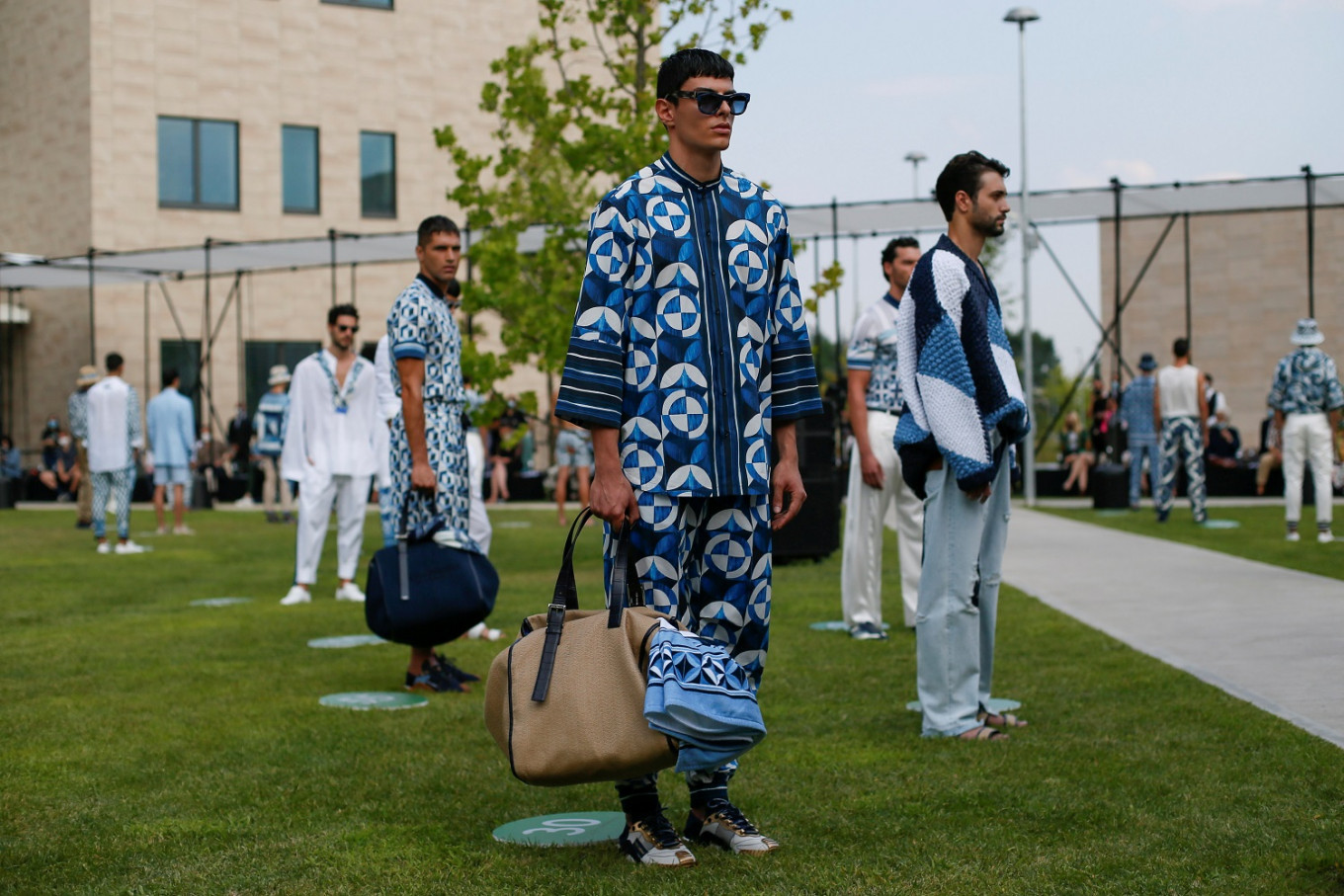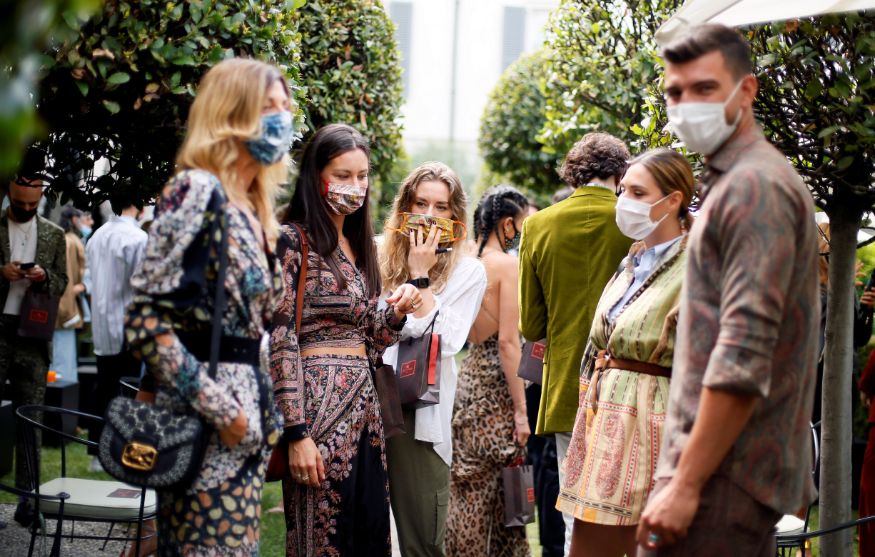Dolce and Gabbana (D&G), the luxury Italian fashion house, Wednesday became one of the first to hold a ‘physical fashion week’ in today’s turbulent Coronavirus times.Etro, an older Italian retail brand, beat D&G by a day to be the first-ever fashion brand to hold a physical fashion show, at the ongoing Milan Fashion Week.

An operatic pop trio belted out song from the center of a medical university plaza Wednesday while Dolce&Gabbana’s showed its latest men’s collection in tones of summer blues and geometric prints.
Just five months ago, there would have been little remarkable in such a scene.

But the coronavirus pandemic has largely put the kibosh on live fashion shows — with most fashion houses going digital to launch their summer collections for next year in both Milan this week and Paris last.
Also working against the fashion show ritual, cross-border travel has become difficult, if not impossible. Shoulder-to-shoulder seating is definitely out.
Fashion Weeks are often seen as the nerve centres of high fashion — setting trends, unveiling new talent both on and off the ramp — and are the birthplace of many a new celebrity. A front-row seat is often the chosen platform to make one’s debut on the page three circuit. We go behind the scenes to where it all started, in 1943, with the first-ever fashion show in New York.Paris, the birthplace of everything Fashion
Today, the word ‘fashion week’ brings to mind picture-perfect models, walking on ramps with enviable confidence, and the paparazzi in overdrive.
But the rich, glamorous, modern avatar of fashion weeks has its roots in the much humbler racetracks and salons of Paris in the 1700s. In a very disorganized way, retailers would dress up young women in couture wear and parade them in public places, ranging from racetracks to salons. These humble parades were called défilés de mode, literally meaning fashion parades.
Soon, these parades acquired the status of ‘social events’, with the who’s who of the city in attendance. While things were disorganized and spontaneous in Europe, across the pond, the US gave the world its first-ever fashion show, in 1903. Ehrich Brothers, a New York store, put together a show to entice middle-class women to shop at their department store.
By the end of the decade, many other department stores had followed suit. The idea of the fashion show had been appropriated by the stores, and they were often held in the store’s restaurant during lunch or tea time. By 1950s, when these shows became popular enough to attract thousands, crowd management became a necessity, and so did the need of having a licence to showcase live models.
The Ramp as we know it
The year was 1943 and the world was dealing with the Second World War. The first-ever fashion week — the New York Fashion Week, then called the ‘Press Week’ — was held in New York, with the sole purpose of distracting Americans from French designers and French fashion. During the war, many couldn’t travel to the French Capital to apprise themselves of the latest developments in the fashion world, and the idea was to bring attention on American designers and retailers, who seemed to always be playing second fiddle to Paris.
The brainchild of Eleanor Lambert, The Press Week was a success, and till date, the New York Fashion Week is held bi-annually over many locations in the city.
The Big Four
While New York became the first to have its own Fashion Week, other fashionable cities took their own sweet time to join the fray. Paris took the plunge in 1945 and started with couture shows, but it wasn’t till 1973 that they held the first one under the French Fashion Federation; Milan Fashion Week started in 1958 and London was the last to complete the quartet in 1984, when it was founded by the British Fashion Council.
Over the last decade, the fashion world has become increasingly multi-polar, with cities like Sydney, New Delhi, Sao Paulo, Copen Hagen, Tokyo Dubai, Beirut and Vancouver hosting their own fashion weeks and contributing to the global language of fashion. That said, the Big Four — Paris, Milan, New York and London still hold a place of pride in the world of Fashion Weeks.
Timing
Normally, there are two versions of a fashion week — one held in February/March, where designer and labels showcase their collections for the Autumn/Winter season, and the second one in September/October for the Spring/Summer time.
Collections are normally made an entire season in advance, to give time to buyers to preview and plan their consumption strategy.
However, though the Autumn/Winter and Spring/Summer still remains a tried-and-tested routine for many, there is a shift in the frequency with which collections are churned out. There are conversations galore about the need for fewer collections and slower fashion. Many designers and labels have shifted to ‘in season’ collections and many are rethinking their current module.
Next up
While a bulk of designers and fashion house have opted for ‘digital showcases’ of their designs at the latest Fashion weeks, Etro and Dolce and Gabbana have come under severe scrutiny for their ‘physical’ endeavour.
While some noticeable efforts were made to maintain the mandatory 1-metre distance, models took off their face masks only on the ramp, and the shows had a visibly pruned guest list, questions have been raised at the underlying risk of it.
Fashion Weeks are known for socializing, air-kissing, after-parties and many umbrella events that take place, where people congregate, dissect and debate the clothes on display. It remains to be seen if social distancing can go hand-in-hand with a typical fashion week.
